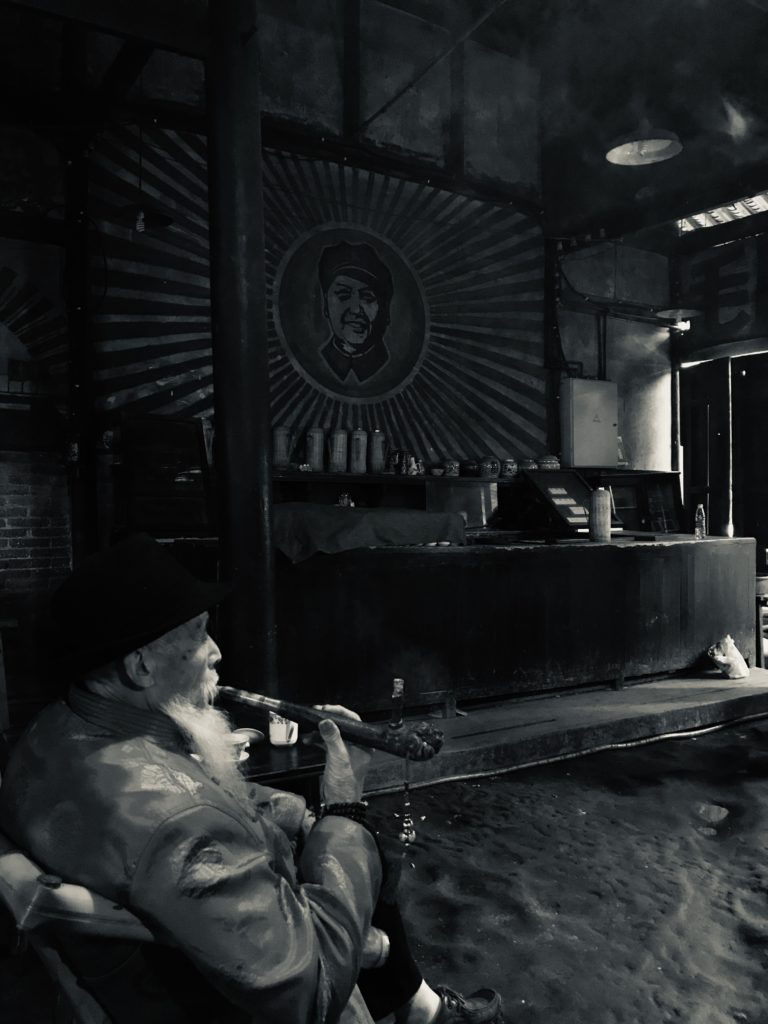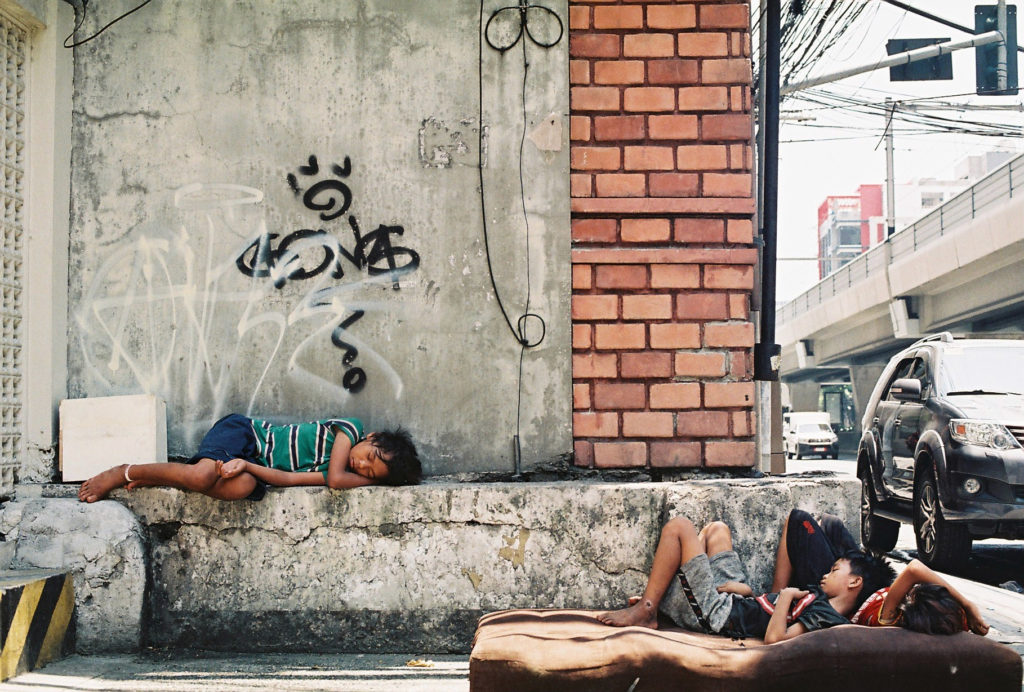Thanks to everyone who submitted photos to this year’s Imaging the Asia Pacific Photo Contest! We’re excited to announce that Christal Cheng was selected as the grand prize winner for her photo “Tranquil Teahouse.” The two runners up are Alicia Pan for “Admiring the Blossoms” and Timothy Siao for “Street Spirit.” View the winning photos and read about them in the students’ own words below. All of this year’s entries are available for viewing here.

Tranquil Teahouse, by Christal Cheng. Chengdu, the capital of China’s Sichuan Province, is known for its slow-paced lifestyle. Step into the century-old teahouse, the perfect destination for leisure, a catch-up, and a cup of green tea.
Christal Cheng
Grand Prize: Tranquil Teahouse
Undergraduate student (Specialist in International Relations, Minors in Contemporary Asian Studies and Political Science)
I am especially intrigued by the study of contemporary Chinese politics, examining China’s rise, China’s changing role in the international system, and its impact on the future of global governance. I am a frequent visitor to China, and am always looking for ways to increase my exposure to the greater Asia Pacific region.
The photo was taken in the summer of 2019, in the city of Chengdu, the capital of Sichuan province in Southwest China. In addition to being home to the giant panda, Chengdu is also known for its historical sites and heritage such as the Leshan Giant Buddha, Wuhou Shrine, Mount Emei, and the Du Fu Thatched Cottage, just to name a few. Famous for its leisurely, slow-paced lifestyle in contrast to the bustling global cities of Beijing and Shanghai, Chengdu retrieves a sense of lost tranquility amidst the city’s skyscrapers.
I enjoy the art of photography, but I am far from a professional photographer. I truly believe that a picture is capable of evoking emotions, narrating a story, and capturing moments of time that other mediums cannot as effectively deliver. This Guanyin Pavilion teahouse has preserved a lot of the remnants of the Cultural Revolution – whether it’s the age-old painting of Chairman Mao Zedong, or the propaganda posters rallying support for socialism. The teahouse presents itself as a counterweight to the foreign-imported coffee chains, providing a glimpse into the local culture, and preventing it from becoming obsolete in the highly modernized, materialized societies emblematic of China’s development.

Admiring the Blossoms, by Alicia Pan. A young girl is found under a cherry blossom tree admiring the beautiful blooming blossoms on a gloomy spring day.
Alicia Pan
Runner Up: Admiring the Blossoms
Master of Teaching student, Ontario Institute for Studies in Education
The photograph was taken in late March of 2017, on the trail of the Ara tombs in the rural town of Haman-Gun, situated in South Korea. I had recently moved to Haman-Gun to teach English as a Foreign Language. While commuting to work, I would always admire this isolated tree at the top of a hill and wondered how to reach it. As cherry blossom season was approaching, I noticed that this tree began to bloom into a beautiful pale pink colour earlier than the rest of the cherry blossoms in town. I set out to find where it was and discovered that the entrance of the Ara Tomb trail led straight to this large cherry blossom tree. Up close, it was so beautiful and too perfect not to capture! As it was a gloomy and stormy day, there were no other hikers on the trail. I decided to set up my tripod and admire the blooming cherry blossoms up close for this photo. Soon after capturing this moment, another hiker had appeared and was visibly upset. Since I was still new to Korea and the language, I could not fully understand what they said, however I assumed it was because I had left my tripod and belongings on the trail unattended. I quickly packed up my things and headed home right after!
In the summer of 2012, I bought my first DSLR camera. It was an old second-hand camera from my cousin who was already an established wedding photographer. He gave me a one-hour tutorial on the basics of photography and how to shoot manual. That summer, I shot over 10,000 photos in and around my backyard to practice using my new camera. I have been taking every opportunity to capture photographs ever since, and have added a few more cameras and lenses to my arsenal over the years. I hope to one day open up my own studio and business for photography. My strongest genres of photography would include landscape, travel, wildlife and pet photography. Currently, I run an Instagram for my one year old husky, Akira, who has over 11k followers! Feel free to check out our page @_akira.the.husky_

Street Spirit, by Timothy Siao. A common sight throughout the Philippines. Poverty is rife and widespread corruption perpetuates it. The innocents are stuck in the middle of it all. Taken in the Malate District of Manila, July 2019. Shot on Kodak Portra 400 film.
Timothy Siao
Runner Up: Street Spirit
Undergraduate student (International Relations)
I’m a second-year International Relations major with interests in great power rivalries, international relations theory, geopolitics, and the intersection between A.I. and governance. I suppose that the themes of this photo draws upon the consequences of international practices throughout history. To me, Gourevitch’s reversal of Waltz’s second-level analysis speaks relevance to the photo’s context.
This photo was taken in July 2019 in downtown Manila along a major road called Taft Avenue. I was in the country visiting some friends and family. A friend suggested to me that I visit their university and I agreed because I was curious. I felt that this was a good opportunity to document the “life” around the university’s vicinity, so I decided to go on a photo walk. As I came down to the last few exposures of my second and final roll of film, I happened upon the parking lot of a closed bank. And it was there I saw the subjects of my photo. Keeping a respectful distance, I bent down, metered, and shot off this exposure. Once done, I left to rejoin my friend.
After I finished developing the rolls I shot, I was able to reflect on what I’ve seen. While I truly felt sorry for their circumstances, I was amazed by their ability to find some tranquility in sleep. After all, it was the middle of the day, humid, and in an environment of endless noise from pedestrians, construction, and transportation. My other experiences in the country reminded me that this is not an uncommon sight to be seen. The vicious cycle of poverty that imposes a grim reality on these children stems from the constant failures of an inept and kleptocratic government. But despite the conditions they find themselves in, they are resilient. And this is evident from their refusal to let their circumstances prevent them from getting something desirable such as rest.
I decided to call this photo “Street Spirit” after reading Ben Okri’s “The Famished Road.” To me, novel’s depiction of its protagonist as an abiku – a spirit child who dies before reaching puberty – parallels the harsh quality of life of these children.
I took up photography shortly before the conclusion of my first year. My rationale was rooted in my desire to limit the time I spent looking at a screen and cultivate an appreciation for my natural surroundings. I chose to shoot on film because of the high learning curve it imposed on me. Film was initially unforgiving; I needed to account for a ton of variables before firing off a shot. But with practice, I learned how to be selective with my photos, informed by the ebbs and flows of the picture taking process. Film involves a very organic process from the moment of focus to the firing of the shutter, and its results – the colours – are just incomparable, in my opinion, to what a digital camera can offer. Because of this, every perspective my eyes gazed upon was something new, connecting links in my head with things I’ve previously seen. And I suppose the same can be said about my passion for International Relations. It happens every time I read a book, write a paper, meet a professor, or talk to a colleague.